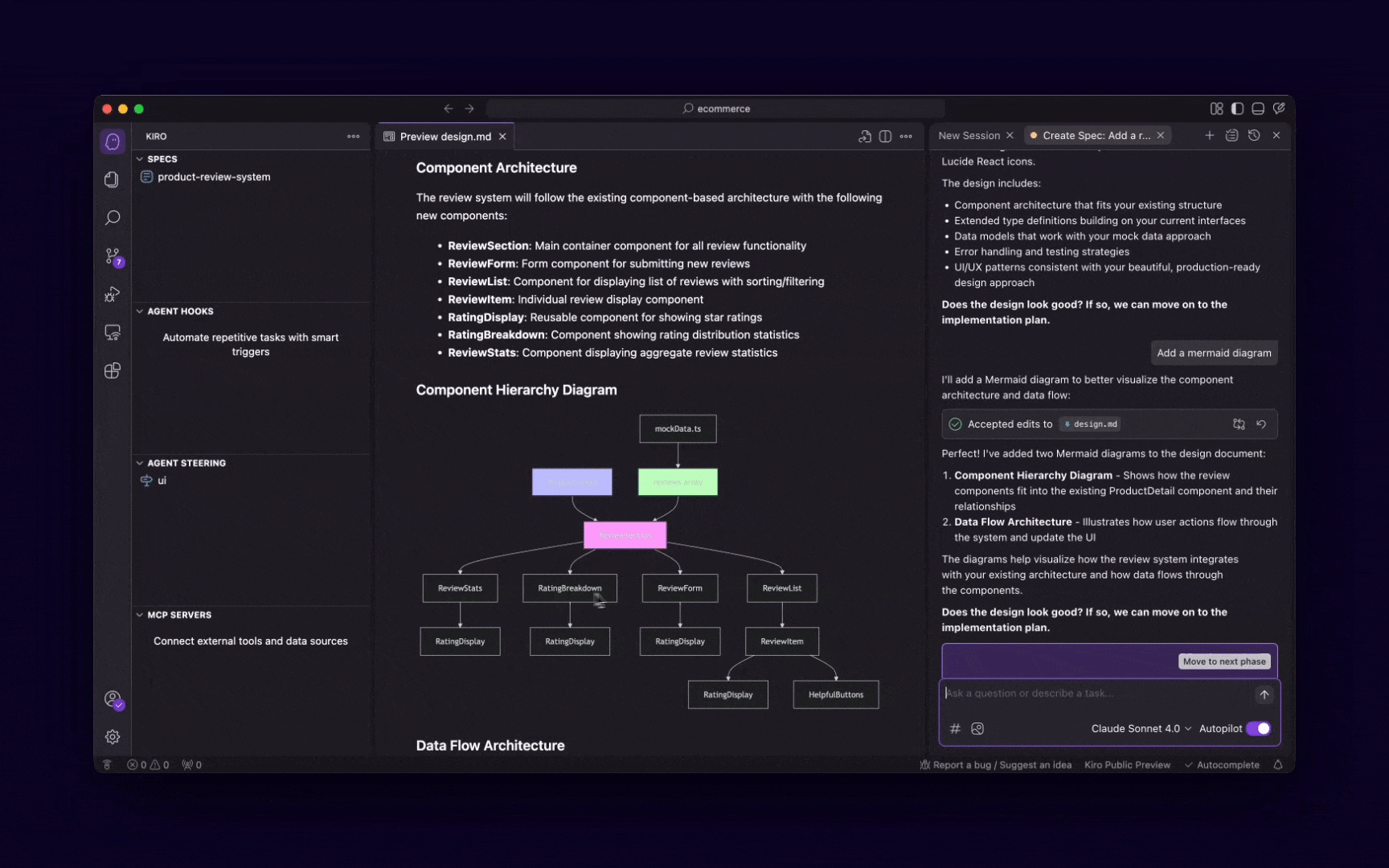Woah Amazon’s new Kiro IDE is absolutely HUGE.
And if you think this is just another Cursor or Copilot competitor then you are dead wrong on the spot…
This is a revolutionary approach to how AI coding assistants are supposed to be… This is real software development.
Development based on real GOALS — not just randomly prompting an agent here and there.
No more blind stateless changes — everything is grounded on real specs, requirements, and goals 👇
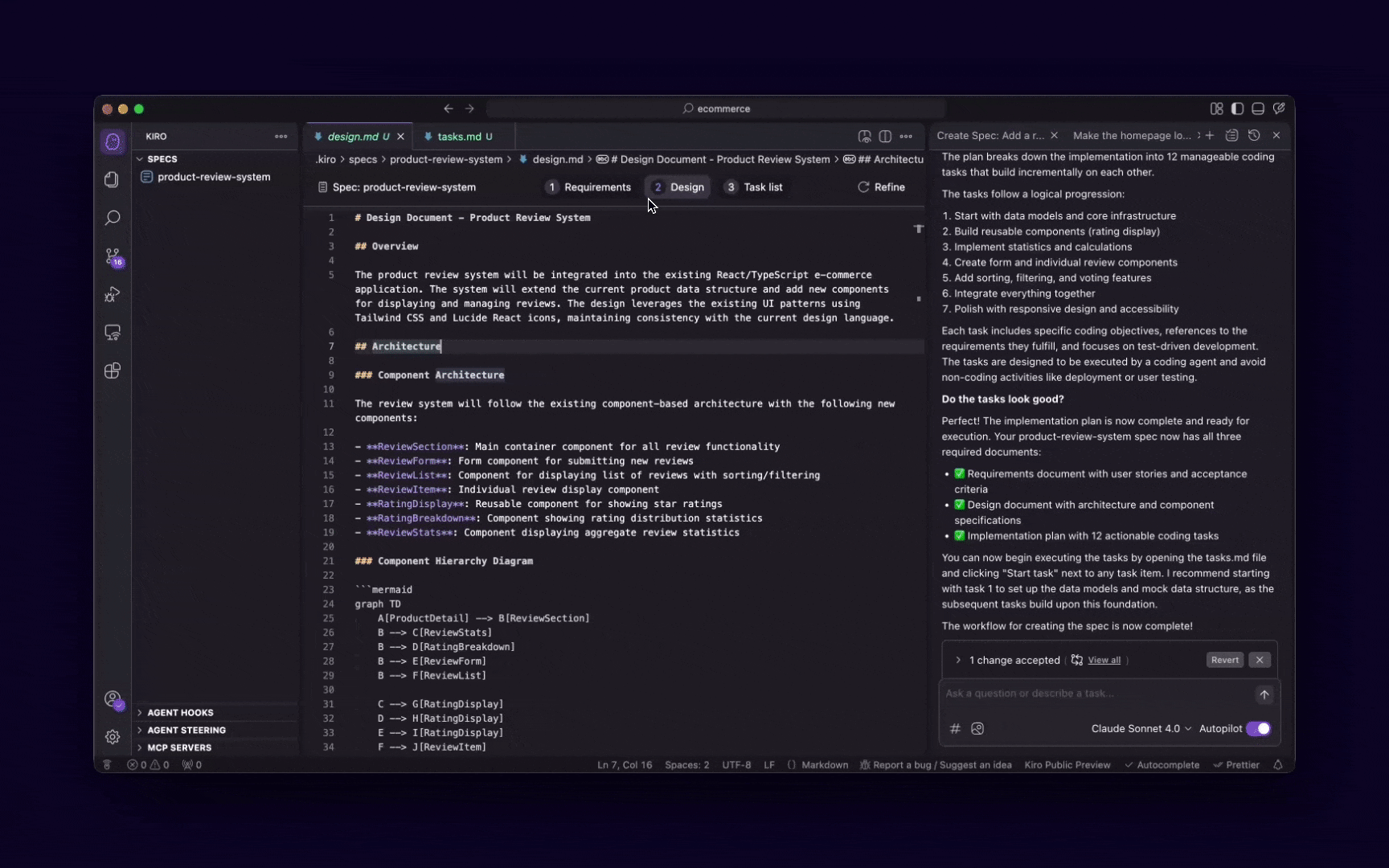
Amazon Kiro understands that you’re not just coding for coding sake — you have actual targets in mind.
Targets it can even define for you — in an incredibly detailed and comprehensive way:
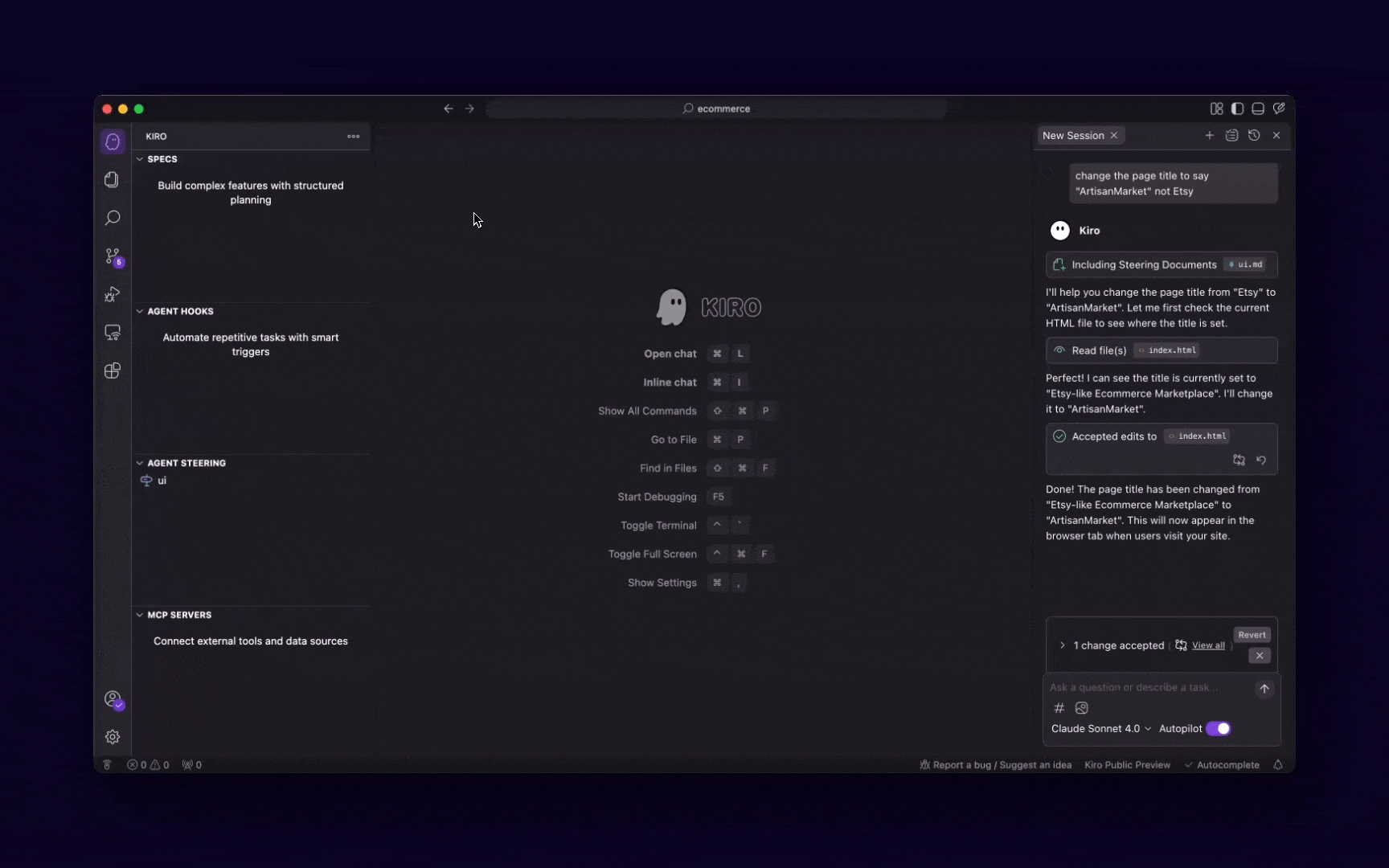
Look — it can even make unbelievably sophisticated designs for you based on your requirements 👇
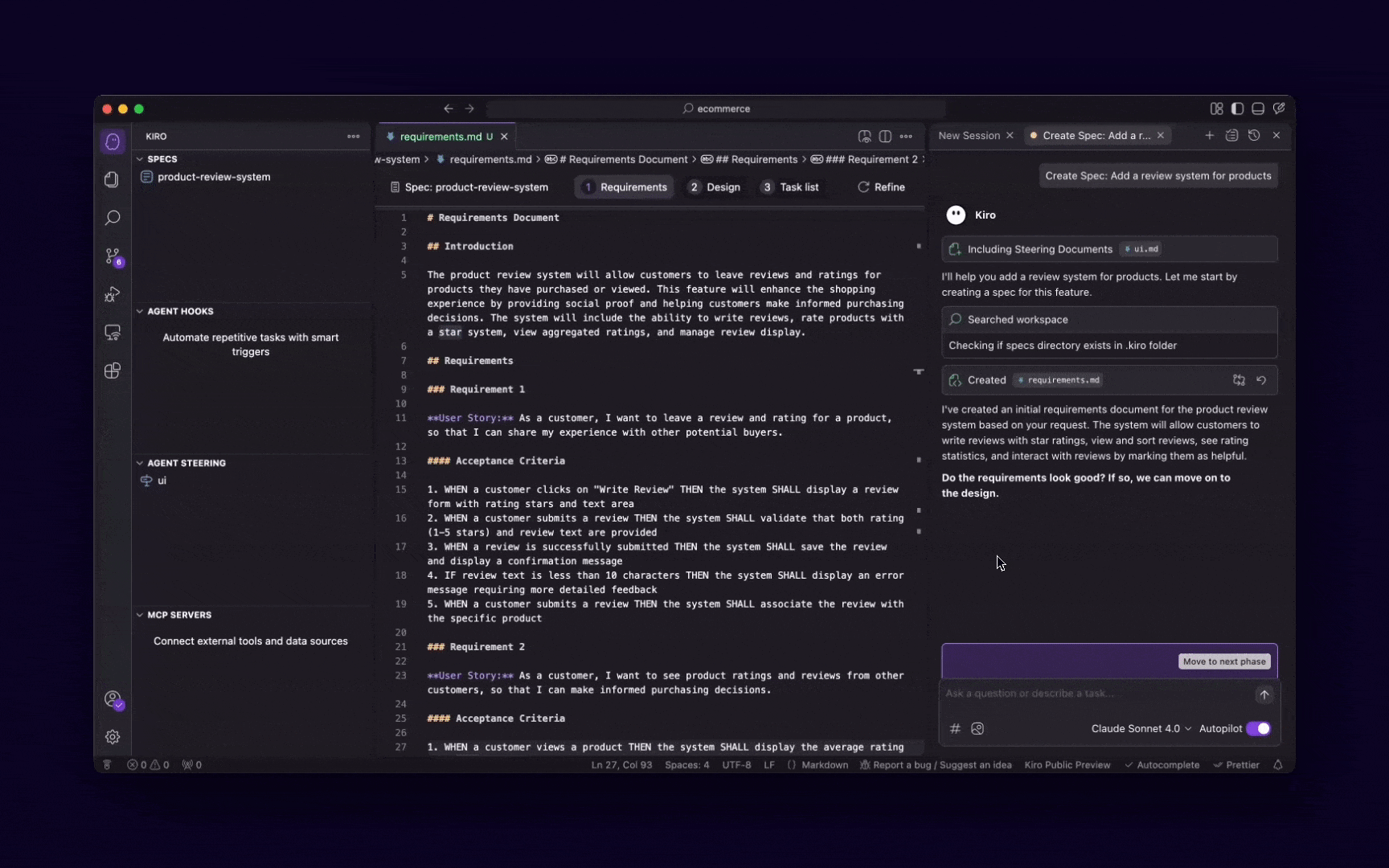
I told you — this is REAL software development.
This is just one of the incredibly innovative Kiro features that no other IDE has.
And guess what — It’s based on VS Code — switching is so ridiculously easy — you can even keep your VS Code settings and most extensions.
Goal-first thinking, agentic automation, and deep integration with tools developers already use.
Two big ideas
Kiro is based on two big ideas it implements in an unprecedented way:
Spec-driven development
This is very similar to what Windsurf tried to do with their recent Markdown planning mode update:
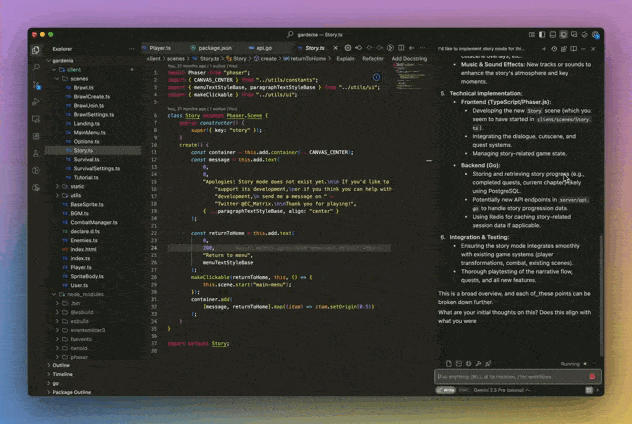
You don’t start with code. You start with intent — written in natural language or diagrams.

These specs live alongside your codebase, guiding it as the project evolves. Kiro continuously uses them to generate and align features, update documentation, track architectural intent, and catch inconsistencies.
Background hooks
This one is absolutely insane — how come no one ever thought of this until now?
Hooks — automated agents that run in the background. As you code, they quietly:
- Generate and update docs
- Write and maintain tests
- Flag technical debt
- Improve structure and naming
- Ensure the implementation matches your specs
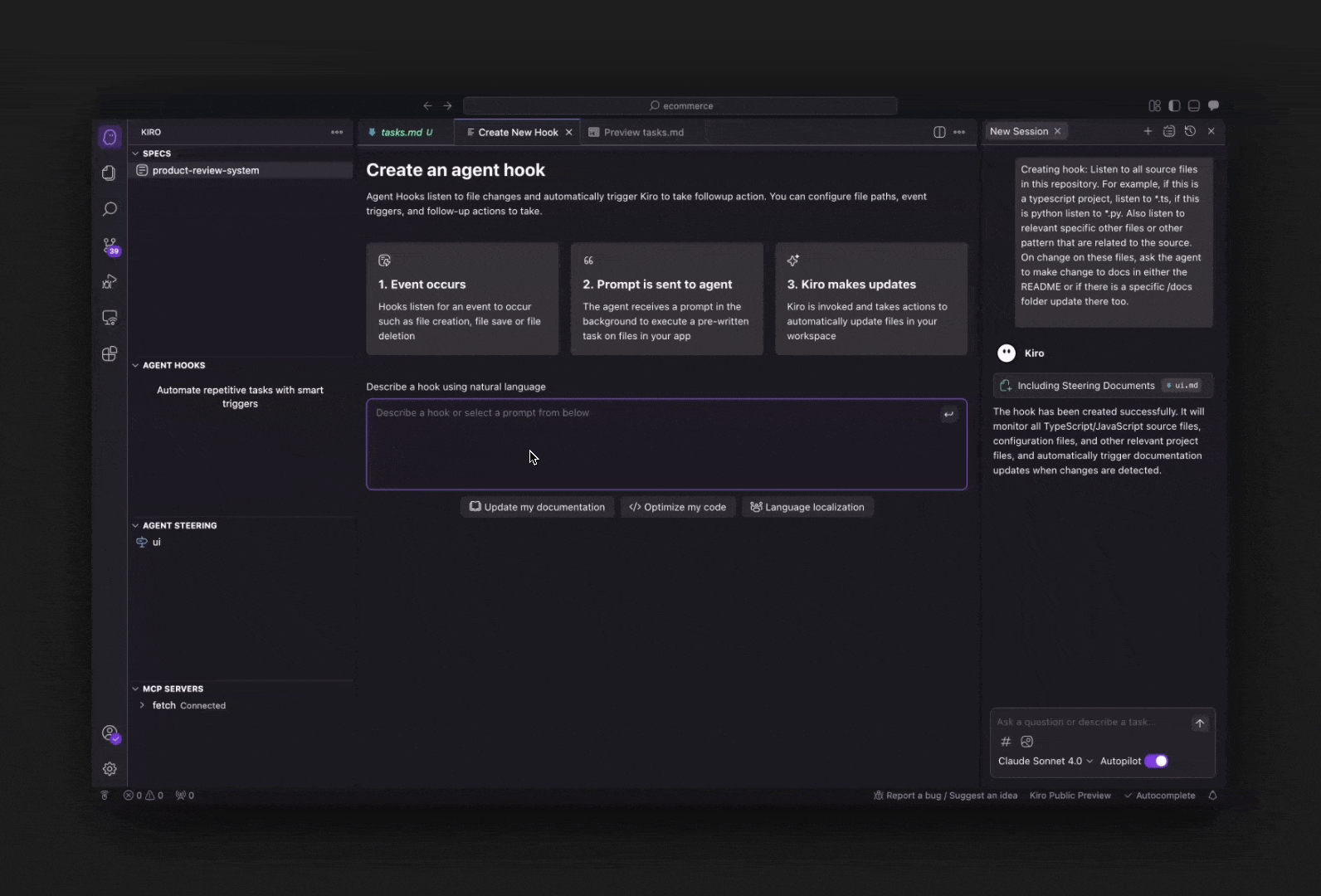
This isn’t just a chat window on the side. This is an always-on assistant that sees the entire project and works with you on every save.
Under the hood

Code OSS Core
Kiro is built on Code OSS — the same open-source engine behind VS Code. Your extensions, keybindings, and theme carry over seamlessly. Zero learning curve.
MCP Integration
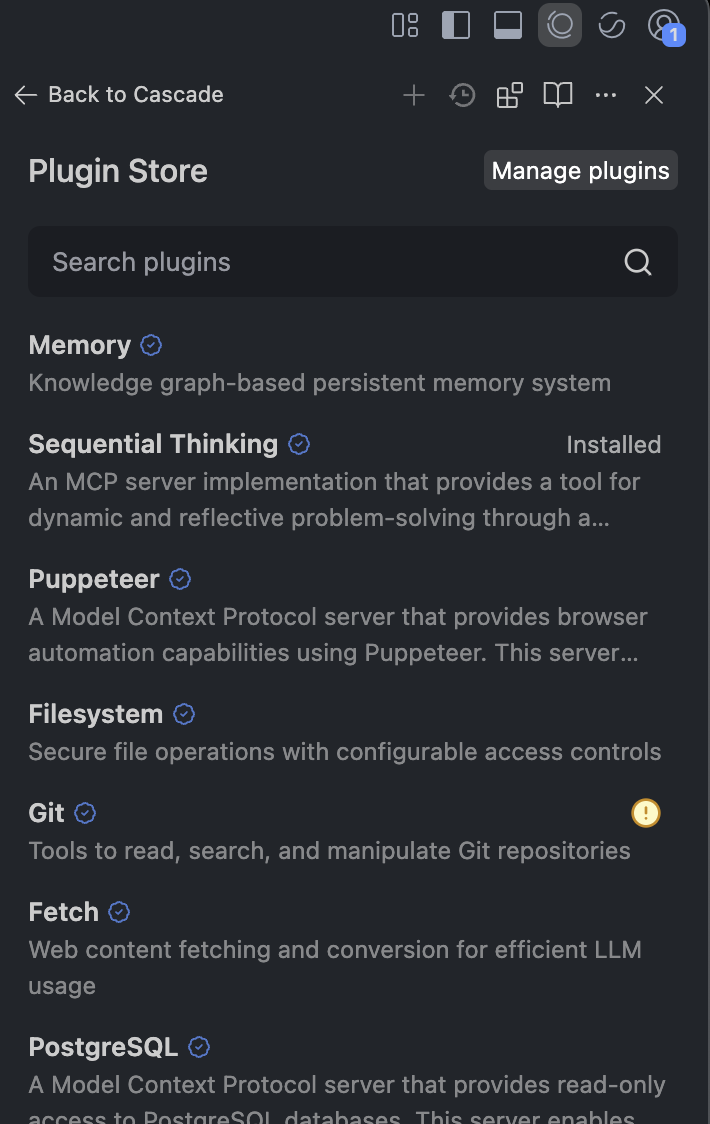
It supports the Model Context Protocol, allowing Kiro to call external agents and tools through a shared memory layer. This sets it up for a future of multi-agent collaboration that’s already taking shape.
Model Support
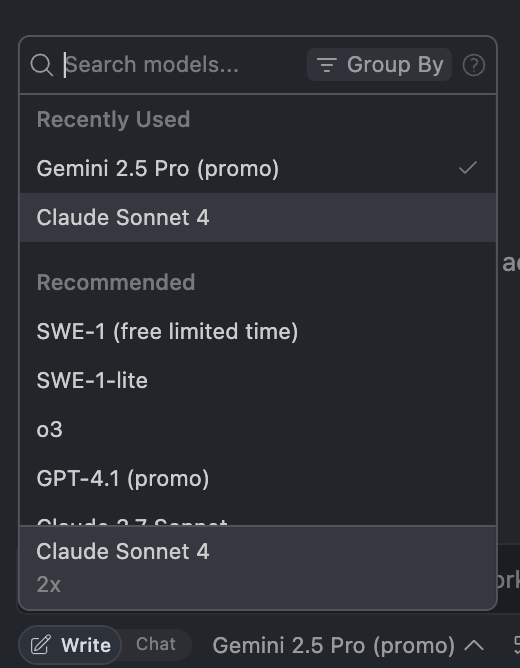
Kiro runs on Claude Sonnet 4.0 by default, with fallback to Claude 3.7. Support for other models, like Gemini, is on the roadmap — and the architecture is designed to be model-flexible.
Massive demand already
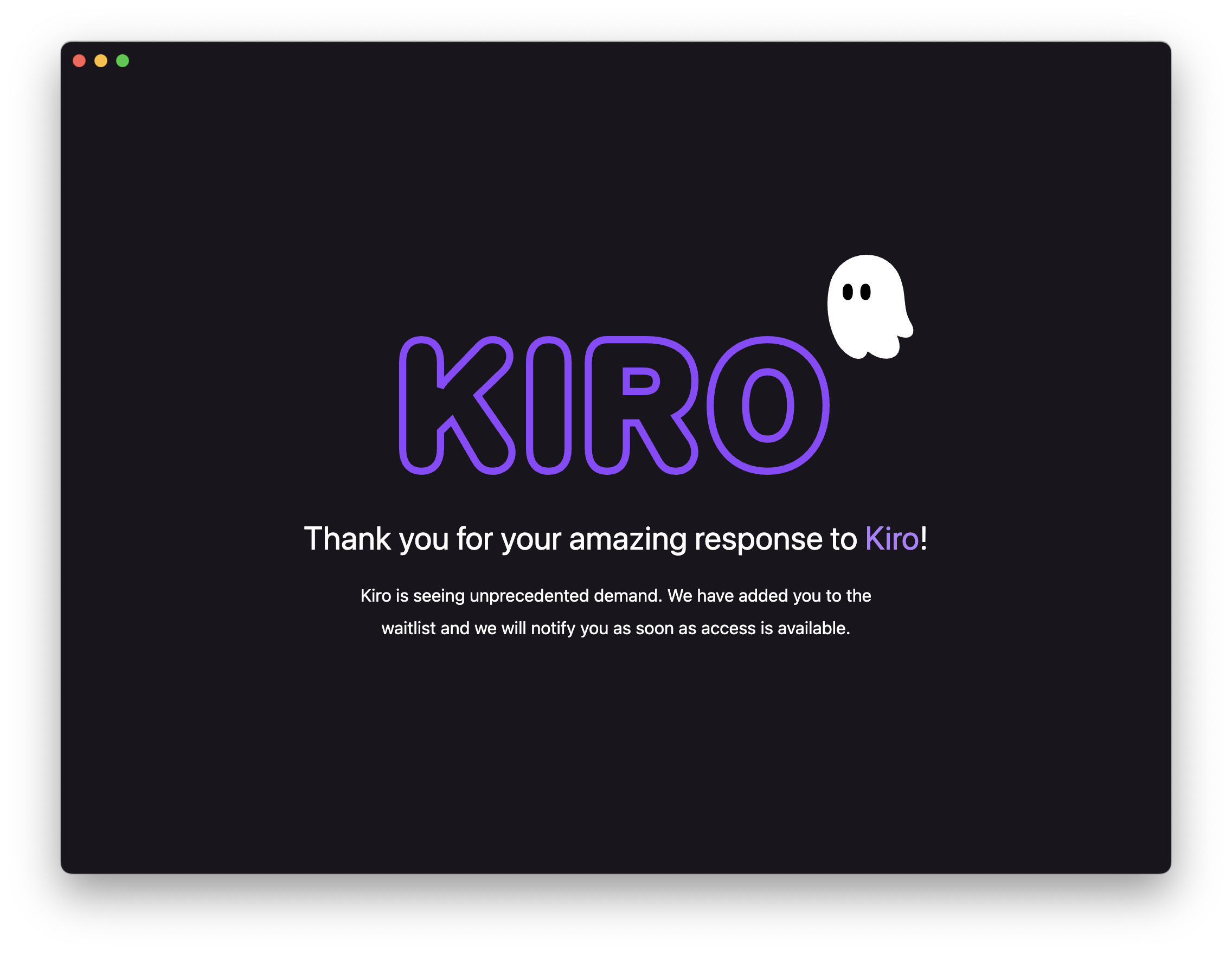
Kiro is in free preview right now — but massive demand has already forced AWS to cap usage and implement a waitlist.
A full pricing structure is on the way — something like:
- Free: 50 interactions/month
- Pro: $19/month for 1,000 interactions
- Pro+: $39/month for 3,000 interactions
Signups are open, but usage is currently restricted to early testers.
Better
If you’ve used Cursor or Windsurf, you already know how powerful it is to have agentic workflows built directly into your IDE.
Kiro builds on that foundation — but shifts from reactive prompting to proactive structure. It doesn’t just assist your coding. It tries to own the meta-work: the tests you skip, the docs you forget, the loose ends that add up over time.
That’s where Kiro stakes its claim — not just as a smart code editor, but as an operating system for full-stack development discipline.
Don’t ignore this
Kiro is still early, but it’s not experimental in spirit. It’s built with a clear vision:
- Bring AI into every layer of the software kdevelopment process
- Anchor work around intent, not just implementation
- Support fast prototyping and scalable production with equal seriousness
For solo builders and teams alike Kiro is most definitely worth keeping an eye on.
Not just for what it does now, but for what it signals about where modern development is headed.
